Light dramatically affects our lives, from enhancing mood to influencing cellular functioning. Red light therapy has received increasing attention regarding therapeutic applications. However, not all red lights are the same.
In this article, we will discuss the differences between red light therapy and ambient red light, the specific applications of each, and share practical tips on how to implement both into your life.

Quick Answer for Commonly Asked Questions
1.1 Can I use bulbs/LED strips/heat lamps for red light therapy?
Not every red light proves effective in red light therapy. Therapy-grade devices emit certain wavelengths, which are clinically tested to penetrate the skin and tissues of the human body for cellular benefits; these have usually been measured in between 600-660 nm (red) and 800-850 nm (near-infrared). Regular bulbs or heat lamps do not have the specific wavelength and intensity that therapy-grade devices do.
1.2 Are all red lights the same?
There are different red lights, which differ in wavelength, intensity, and purpose. Red light devices used in therapy affect biological processes, while red lights used in the room are mainly for aesthetic or ambient purposes.
1.3 Are all red light therapy devices the same?
There is a difference in wavelength accuracy, power density, and design among the red light therapy devices. Quality devices always provide therapeutic benefits when used, while substandard devices may lack the same due to poor uniformity or weak intensity.
Red Light Therapy Definition
2.1 Science Behind
Red light therapy, also referred to as photobiomodulation, involves shining specific wave lengths of red and near-infrared light on one's body. The skin absorbs these wavelengths, penetrates deep into it, and is absorbed by the mitochondria, the energy powerhouses of the cells for boosting ATP (energy) production.
Enhanced cell repair, stimulation of regeneration, and anti-inflammatory effects make it a miracle cure in medicine and cosmetics.
2.2 Treatment Applications
Red light therapy application involves the following areas:
- Dermatology: Treatment of acne, wrinkles, and scars.
- Pain Management: Relief of muscle and joint pain.
- Wound Healing: Speeding up tissue repair.
- Hair Growth: Follicle stimulation in hair thinning cases.

Benefits of Red Light Therapy
3.1 Skin Health
With red light therapy, more collagen is produced in the skin to promote better elastic skin and reduced wrinkles. It also speeds up the healing of scars and decreases inflammation resulting from conditions such as eczema and psoriasis.
3.2 Pain Relief
In fact, red light therapy has proven beneficial for both competitive sports athletes and individuals with chronic pain. It works by relieving muscle soreness and reducing inflammation. The therapy is also well known as a non-invasive alternative in the management of arthritis, tendonitis, and any other musculoskeletal condition.
Ambient Red Light Definition
4.1 Characteristics of Ambient Red Light
Ambient red light is softer, low-intensity red light used mostly as environmental illumination. It is not used for making deep cellular interventions like the therapy-grade ones but instead gives a more calming and pleasing surface effect.
4.2 Use in Daily Life
Applications of Ambient Red Lights:
- Interior Lighting: Brings warmth into space.
- Sleeping Aids: Red Light has a much less melatonin-suppressing effect than blue light, so it is best to use it in the evening.
Key Functions and Applications of Ambient Red Light
5.1 Mood Enhancement
Ambient red light tends to radiate sensations of warmth and comfort in the home, allowing it to be used in many spaces that invite relaxation or romantic times. It even appears to have calming effects and some experimental studies show that it actually contributes to anxiety reduction in subdued lighting.
5.2 Sleep Improvement
It minimizes melatonin production interference; hence, exposure to red light in the evening would benefit supporting natural circadian rhythms. Such lamps provide soft red light for the bedroom, which is a great accessory for better rest.
Different Mechanism of Action
6.1 Cellular Level
Red Light Therapy - the penetration of skin tissues to energize mitochondrial function within the cell and increase ATP production within the cell.
Ambient Red Light mostly changes the brain's reaction to light for uplifting relaxation without directly affecting the cells.
6.2 Impact on Health
Though red light therapy boasts many beneficial factors such as soothing pain and rejuvenating skin, ambient red light is making headway primarily through its support for mental wellness and sleep. Both, however, are equally crucial but play different roles in promoting health.
How to Use Them Together Effectively?
7.1 Combining Both Approaches
Using red light therapy for targeted treatments and ambient red light for overall relaxation can make up a restorative wellness regimen. For example:
Morning light therapy under red light can prepare the body for energy consumption.
Wind down for the evening beneath ambient red light to encourage restful sleep.
7.2 Recommendations for Use
For Treatment: Buy a premium red light therapy to design your settings. It should penetrate wavelengths of 600-850 nm for optimum performance.
For Ambiance: Utilize suitable dimmable red LED bulbs or smart lights, particularly intended for night use.
Safety and Side Effects
8.1 Risks of Red Light Therapy
Generally speaking, the use of red light therapy is safe, but overexposure can cause minor skin irritation or eye strain.
Always follow the manufacturer's recommendations regarding its use and use goggles to shield your eyes from exposure.
8.2 Ambient Red Light Considerations
Reduced risk from ambient red light; however, it might create discomfort for some individuals suffering from light sensitivity. That's why adjustable lights are essential to control their brightness.
Conclusion
Red light therapy and ambient red light have different purposes in improving health and well-being. Therapy-grade red light penetrates quite deeply on a cellular level, allowing it to bring benefits such as pain relief and rejuvenation. On the other hand, ambient red light affects one's mood or sleep-inducing and creates a calming environment. Knowing the differences and combining them allows one to optimize health routines by harnessing the science of light for a better mind, body, and home.
References:
- DE Oliveira MF, Johnson DS, Demchak T, Tomazoni SS, Leal-Junior EC. Low-intensity LASER and LED (photobiomodulation therapy) for pain control of the most common musculoskeletal conditions. Eur J Phys Rehabil Med. 2022;58(2):282-289. https://pubmed.ncbi.nlm.nih.gov/34913330/
- Verceles AC, Liu X, Terrin ML, et al. Ambient light levels and critical care outcomes. J Crit Care. 2013;28(1):110.e1-110.e1108. https://pubmed.ncbi.nlm.nih.gov/22762935/



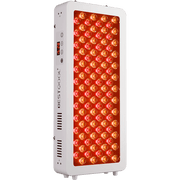









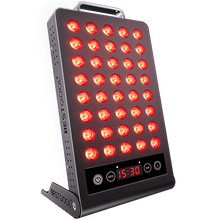
 Small
Small
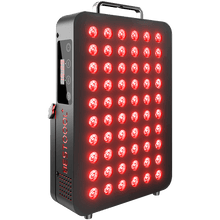
 Moderate
Moderate
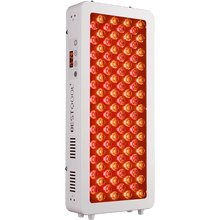
 Moderate
Moderate
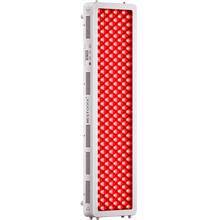
 Moderate
Moderate
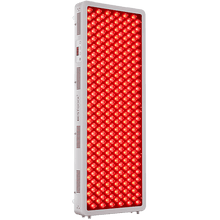
 Full
Full



